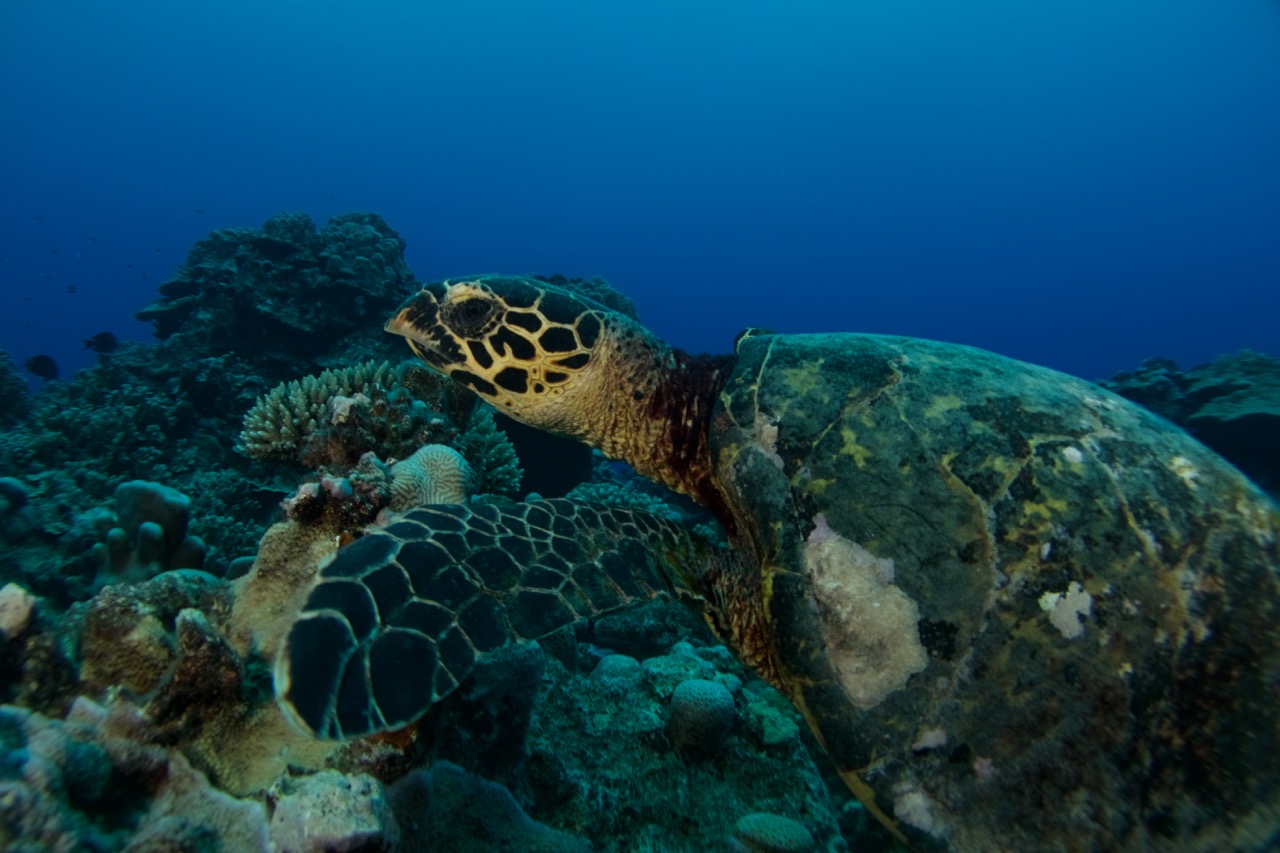Te Ipukarea Society: Discovering the world of Hawksbill turtles: Fun facts and conservation insights
Saturday 20 January 2024 | Written by Te Ipukarea Society | Published in Environment, National

Mature Hawksbill spotted in Tupapa on November 14, 2018. Photo taken by Adventure Cook Islands/24011912
In our aqua blue waters, we are fortunate enough to be graced with the presence of the critically endangered Hawksbill turtle, or Onu Taratara. This week, let’s dive into some fascinating facts about these incredible creatures, shedding light on their lives and the challenges they face.
Our islands are fortunate enough to host nesting sites for both the Hawksbill and their Green turtle relatives. However, coastal development accompanied by light pollution and roaming dogs, here on Rarotonga has disrupted nesting habits, discouraging females from laying their eggs on our shores. Fortunately, they’ve found solace on isolated motu (islets) scattered across our northern and southern group islands.
In the Cook Islands, the general lifespan for a Hawksbill in the wild is estimated between 30-60 years. ‘Hatchlings’, which the young are called, spend the first 1-3 years of their life floating the surface of the big blue ocean, before returning to the shallows at the age of three to be closer to food sources and nesting grounds.
For some islands like Palmerston, Pukapuka and Penrhyn, Hawksbills hold traditional significance. Their eggs and meat are traditionally harvested, but not as frequently as they were in the past. Pukapuka, for instance, has implemented strict management rules limiting the annual harvest, and some islands refrain from taking females altogether. This balance between traditional customs and sustainability showcases the deep respect that we as Cook Islanders have for our turtles.
Interestingly, some of the sponges and small animals that the Hawksbills consume are toxic. This toxicity, however, does not faze the turtle, but makes their flesh poisonous for predatory consumption. This natural feature has deterred some people from harvesting this particular species of turtle for food.
The Hawksbill’s hooked beak, resembling a bird’s, sets it apart from its relatives. The green turtle for example has more of a rounded beak. The Hawksbill’s pointed beak does make it more streamlined, which helps make the Hawksbill the fastest sea turtle (by size) in our ocean.
Hawksbill shells boast a radiant mix of green and amber colour, making them highly sought after for jewellery in the past, sadly contributing to their population decline. The unfortunate truth is that the Hawksbill population has faced a dramatic 80 per cent decline over the past century. Turtle shell trade was a major culprit, along with rising sea levels that erode nesting sites and climate change’s overall impact.
Pollution and purse seine fishing have also taken a toll on the lifespan and contributed to the decline of turtle populations. As turtles misinterpret plastics for food, and the plastic gets stuck in their digestive tract, the cause of death by starvation is the most common result. Turtles are also at risk of being tangled in drifting fishing aggregation devices, used in purse seine fishing, as well as local fishing nets left overnight in lagoons.
Understanding the Hawksbills movements, nesting patterns and dietary habits is crucial for their conservation. Citizen science initiatives like the one found on our website www.tiscookislands.org/assist-in-tracking-individual-turtle-movements allows everyone to contribute valuable data by tracking turtle movement to implement future sustainable management plans. By participating, you become a part of the solution, ensuring that these magnificent creatures continue to grace our waters for generations to come.















































